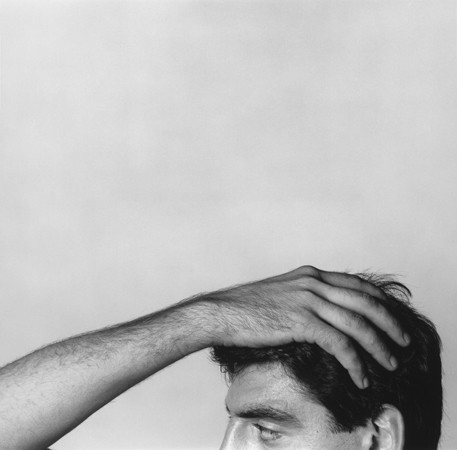Robert Mapplethorpe: Sell the Public Flowers
04 Oct - 15 Nov 2014

Robert Mapplethorpe / Vincent, 1980 / Silver gelatin print / 48 x 38 cm / © Robert Mapplethorpe Foundation. Used with permission.
On Thursday, October 2nd, Galerie Thomas Schulte will open “Robert Mapplethorpe – Sell the Public Flowers”. The show will be open until November 15th. This is the gallery’s sixth solo exhibition with works by the artist.
“Sell the Public Flowers” includes almost 40 silver gelatin prints from Mapplethorpe’s most prosperous decade of work between 1978 and 1988. The exhibition focuses on the distinct style and subject of the black and white photographs, which, at the time of conception, were not just polarizing, but caused hype. A number of his sensual and highly aestheticized nudes and flowers made him one of the most important photographer of his time, which is comprehensively displayed in this exhibition.
Whether photographs of plants or the human body, in his work, the expression of photographic genius is apparent, which at different levels artistically seeks completion and only partially lives through its motifs.
An important compositional trait is the movement, which extends beyond the borders of the images; the quality of the initial cutting and intersecting in the format, as well as his dramatic, and commonly sculptural staging, which in strictness and perfection highlight their art historical tradition. Mapplethorpe meets the erotic portraits and scenes purely artistically and with the same language as he would his still lifes. Mapplethorpe breaks so radically the bounds of what is considered socially and aesthetically – now as then – acceptable and illustrates, with great talent and a distinct approach, how diversely one may look at the world.
Mapplethorpe, who was born in New York and died at the young age of 42, began his carrier as a photographer in 1970, when he produced pictures with Polaroid cameras for his collages. His first experiments swiftly developed into a serious involvement with the medium, which marked the beginning of one of the most important contributions to photography of the 20th century. Up until 1975, the instant camera remained the preferred means of expression for Mapplethorpe, when he began working with the more elaborate forms and larger formats, presented in this show.
“Sell the Public Flowers” includes almost 40 silver gelatin prints from Mapplethorpe’s most prosperous decade of work between 1978 and 1988. The exhibition focuses on the distinct style and subject of the black and white photographs, which, at the time of conception, were not just polarizing, but caused hype. A number of his sensual and highly aestheticized nudes and flowers made him one of the most important photographer of his time, which is comprehensively displayed in this exhibition.
Whether photographs of plants or the human body, in his work, the expression of photographic genius is apparent, which at different levels artistically seeks completion and only partially lives through its motifs.
An important compositional trait is the movement, which extends beyond the borders of the images; the quality of the initial cutting and intersecting in the format, as well as his dramatic, and commonly sculptural staging, which in strictness and perfection highlight their art historical tradition. Mapplethorpe meets the erotic portraits and scenes purely artistically and with the same language as he would his still lifes. Mapplethorpe breaks so radically the bounds of what is considered socially and aesthetically – now as then – acceptable and illustrates, with great talent and a distinct approach, how diversely one may look at the world.
Mapplethorpe, who was born in New York and died at the young age of 42, began his carrier as a photographer in 1970, when he produced pictures with Polaroid cameras for his collages. His first experiments swiftly developed into a serious involvement with the medium, which marked the beginning of one of the most important contributions to photography of the 20th century. Up until 1975, the instant camera remained the preferred means of expression for Mapplethorpe, when he began working with the more elaborate forms and larger formats, presented in this show.
